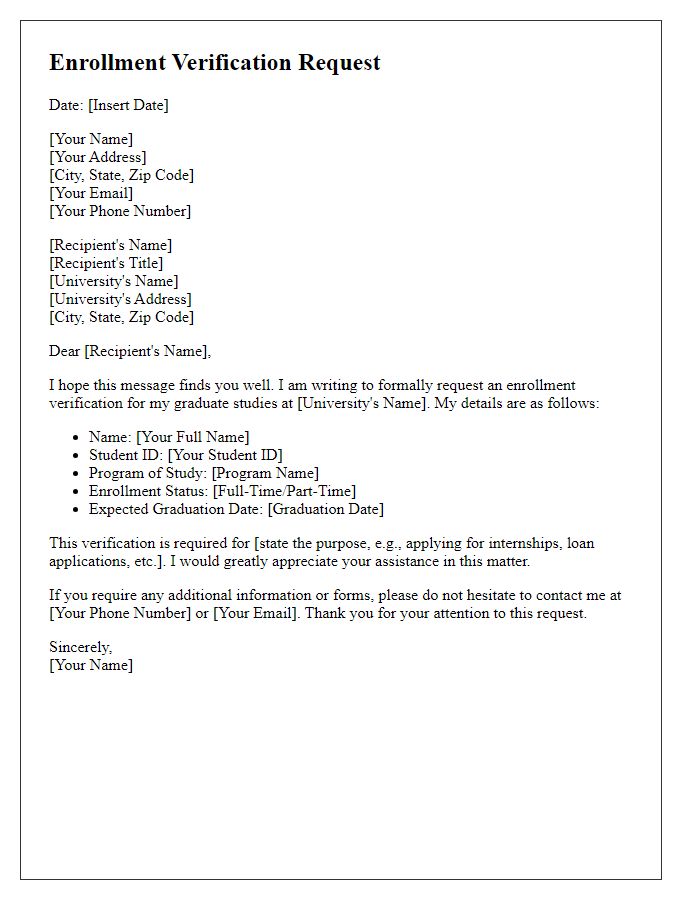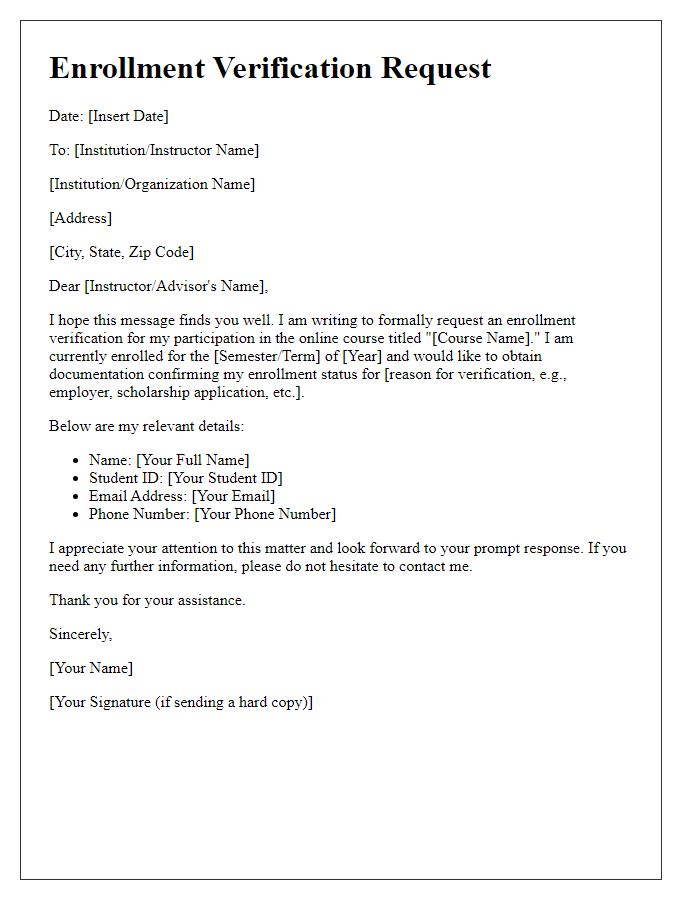Are you in need of an enrollment verification letter but don't know where to start? Crafting this essential document doesn't have to be a daunting task; with the right template, you can streamline the process. An enrollment verification letter serves as proof of your current status in an academic program, making it crucial for various applications like internships or job opportunities. Ready to simplify your enrollment verification request? Read on for a helpful template and tips!

Student's Full Name and Contact Information
Enrollment verification requests are often necessary for students seeking confirmation of their academic status. These requests typically include essential details such as the student's full name (e.g., Johnathan Smith), contact information (including phone number 555-123-4567 and email johnathan.smith@email.com), and the specific purpose of the verification (for instance, applying for financial aid or employment). It is crucial to also include information regarding the academic institution (like University of Example) and the enrollment period (e.g., Fall 2023 semester) to ensure accurate processing. Preparing these details in advance facilitates a smooth verification process and assists the institution in meeting the requested timeline.
Enrollment Details (Program, Start Date, Status)
Enrollment verification is crucial for students to confirm their academic standing and participation in specific programs. For instance, a Bachelor of Science in Computer Science at the University of California, Berkeley, starting on August 30, 2023, presents a student's current status as active. Verification often requires detailed documentation confirming enrollment status, program specifics, and start dates, which may be requested by employers, scholarship organizations, or other institutions. Timely verification can facilitate job applications, financial aid processes, and academic transfers, ensuring that students maintain their educational and professional trajectories effectively.
Purpose of Verification Request
Enrollment verification requests serve to confirm a student's enrollment status at educational institutions, such as universities or colleges. This verification process often includes details such as the student's name, student ID number, program of study, and the time frame of enrollment, typically for the current academic year. Organizations may request this information for various reasons, including eligibility for student loans, residency verification for insurance purposes, or application processes for scholarships. It is essential for institutions to provide accurate verification to uphold the student's academic record and ensure compliance with regulatory standards.
Recipient's Name and Address
Enrollment verification requests are crucial for students to confirm their active status in educational institutions. These documents often include vital details such as the student's full name, student ID, and the degree program, which may include undergraduate, graduate, or professional development courses. Institutions typically require a formal request, either in-person or via email, directed to the registrar's office, ensuring that the request is processed efficiently. Timely submission can facilitate applications for internships, scholarships, or employment opportunities requiring proof of enrollment, a standard practice across universities and colleges in the United States and worldwide.
Signature and Date
Enrollment verification requests often require official documentation to confirm a student's current enrollment status at educational institutions. Typically, this document includes the student's full name, student ID, degree program, enrollment dates, and a statement indicating the purpose of the verification, such as eligibility for financial aid or internships. Signatures from both the student and an authorized school official add authenticity and validity to the request. Including the date ensures the document is relevant and timely for the requesting organization, which may have specific deadlines for submissions. Such detailed documentation is essential for processing various academic and professional applications efficiently.
Letter Template For Enrollment Verification Request Samples
Letter template of enrollment verification request for current students.

Letter template of enrollment verification request for part-time students.

Letter template of enrollment verification request for graduate students.

Letter template of enrollment verification request for international students.

Letter template of enrollment verification request for online course participants.

Letter template of enrollment verification request for student athletes.

Letter template of enrollment verification request for employment purposes.







Comments